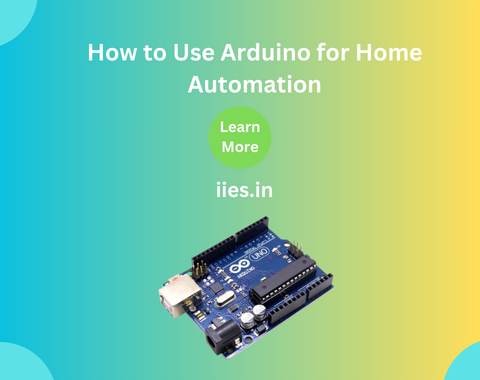
The open-source electronics platform Arduino is built on user-friendly hardware and software. Anyone creating interactive projects, regardless of experience level, can use it.
The microcontroller, a tiny microprocessor on a single integrated circuit, is the brains of Arduino. The Arduino Integrated Development Environment (IDE) and the Arduino programming language (based on Wiring) can be used to program this microcontroller. Arduino’s adaptability, wide library support, and vibrant community make it an ideal choice for home automation applications. Arduino gives you the resources and adaptability to realize your ideas, whether you want to monitor temperature, control lighting, or build a whole smart home system.
1. Building a Smart Home Security System with Arduino
Creating a smart home security system can offer reassurance and safeguard your home against intruders. With an Arduino board, you can design a simple security system capable of detecting motion, sound, or unauthorized access through doors and windows.
2. In today’s fast-paced world, keeping our plants healthy and hydrated can be quite a challenge. One effective solution is to automate the watering process with a straightforward Arduino-based system. Creating a smart plant watering system that automatically checks soil moisture levels and waters your plants when necessary.
3. It is possible to check how much energy you use and find areas where you can conserve energy by using a smart home energy meter. An Arduino board and an energy meter can be used to build a system that shows energy use in real time on an LCD screen.
Steps
Gather Components: Start by gathering the essential hardware, which includes an Arduino board (like Uno or Nano), various sensors (such as temperature, humidity, motion, etc.), actuators (like relays and LEDs), and a Wi-Fi module (like the ESP8266) for remote connectivity.
Choose a Project: Select a specific home automation project that interests you, such as smart lighting, temperature-controlled fans, or remote-controlled outlets, based on your preferences and requirements.
Set Up the Arduino IDE: Download and install the Arduino Integrated Development Environment (IDE) on your computer. Connect your Arduino board and set up the IDE for programming.
Build the Circuit: Assemble the physical circuit by connecting the sensors and actuators to the Arduino. Use a breadboard for prototyping, ensuring that the wiring is correct, especially for relays that manage high voltage.
Program the Arduino: Create a program (sketch) in the Arduino IDE that specifies how the sensors and actuators will interact. This code will process the sensor data and control the outputs accordingly.
Test the System: Execute the code to test the setup, making sure that all components respond correctly to the inputs. Adjust as needed for optimal performance.
Enable Remote Control: Incorporate a Wi-Fi module to enable remote access to the system. You can set up a simple web server or utilize mobile apps to control the devices from anywhere.
Deploy and Secure: Move your circuit into a stable enclosure for permanent installation. Protect your system with strong passwords and network security measures to prevent unauthorized access.
Explore IoT Integration: For enhanced functionality, think about connecting your system to IoT platforms like Blynk or IFTTT to improve remote monitoring and control.
With a number of significant themes influencing its development, Arduino’s future in home automation is bright:
Enhanced Integration: To provide a cohesive and all-encompassing experience, Arduino-based solutions will easily interface with various smart home platforms and gadgets. Improved interoperability standards and protocols will be required for this.
AI and Machine Learning: By combining AI and machine learning, Arduino-powered gadgets will be able to anticipate user demands, understand user preferences, and more intelligently automate jobs. For instance, a thermostat might change the temperature according to the weather and your activity habits.
Improved Security and Privacy: As home automation systems grow more networked, security and privacy will become critical. To prevent unwanted access to user data and devices, sophisticated encryption, authentication procedures, and secure data processing will be crucial.
Indian Institute of Embedded Systems – IIES